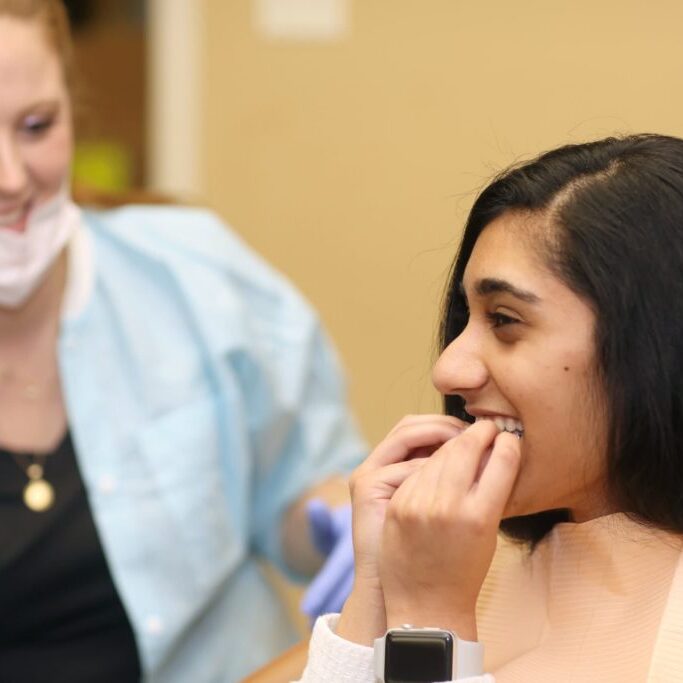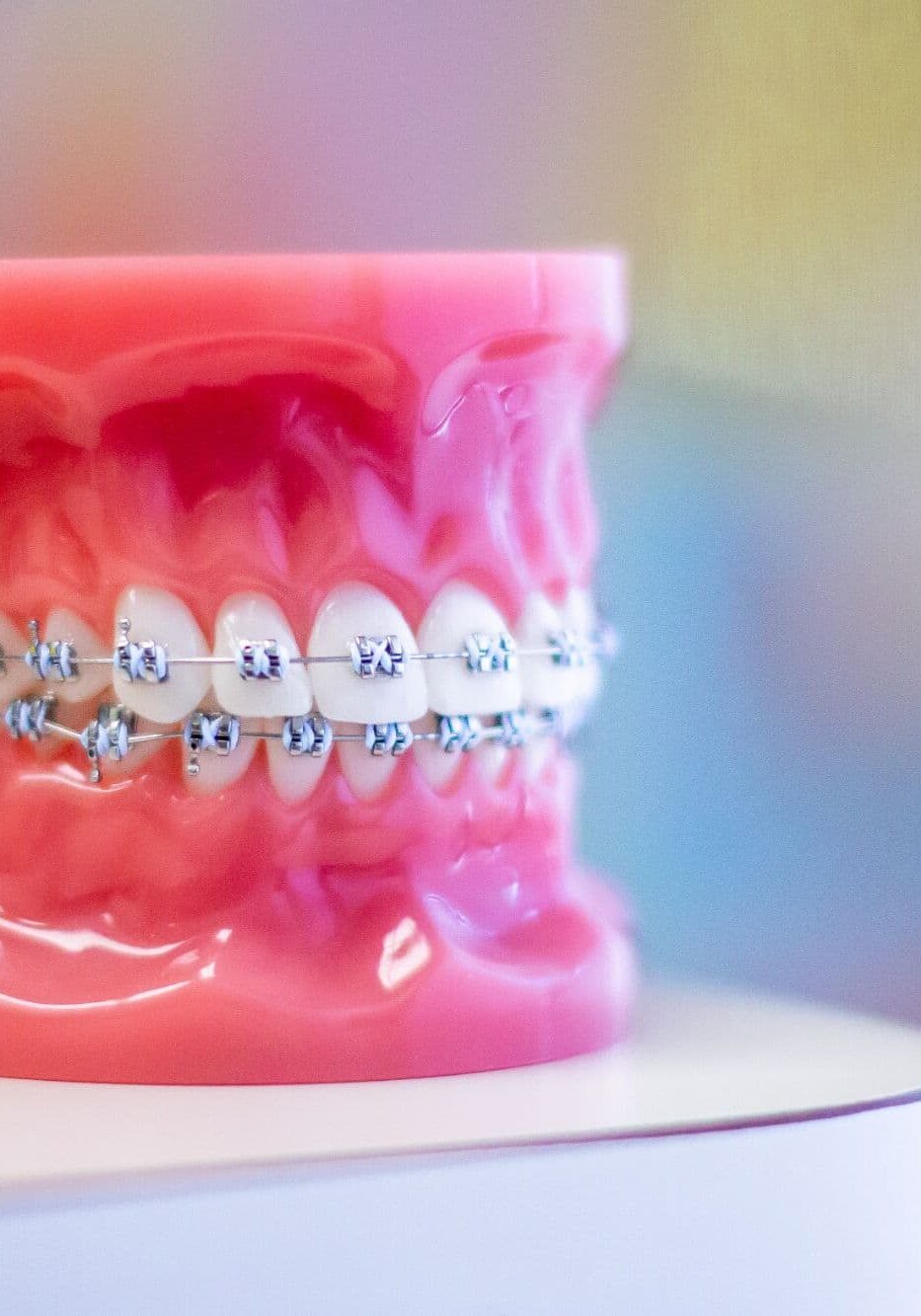
Ortho Tips
Caring For Braces
Dr. Mack or Dr. Jackson is known for creating beautiful smiles. Here are some tips for taking care of your braces.

How to Floss
Our helpful Burlington and Hillsborough orthodontist staff will help you learn proper flossing techniques when you choose us for your orthodontic care.
These tips for flossing with braces will make the process smoother for you, and you'll be a pro in no time.
- Floss every night before you go to bed. That way, you won’t feel rushed.
- When flossing with braces on, it might be necessary to use what’s called a floss threader. This reusable tool allows you to get dental floss underneath your archwire easily.
- Make sure you clean carefully along and under the gumlines.
- Flossing with braces may seem like a difficult process, but it’s very important. And as with anything, a little practice will make it go a lot faster.
Other Hygiene Helpers
In addition to the regular dental hygiene tools we are familiar with like toothbrushes and floss, there are a few products we can recommend that make brushing teeth with braces a little easier to manage.
- Interproximal Brush: This tool slips under your archwire to more completely remove plaque and food particles near your brackets.
- Prescription Fluoride Toothpaste or Fluoride Rinse: Use once a day as part of your cleaning routine, if prescribed by Dr. Mack or Dr. Jackson. For the best results, use with your interproximal brush to deliver maximum fluoride protection to your teeth.
- Power Toothbrush or Waterpik: These devices, such as the Oral-B Professional Series toothbrush, are designed to make brushing easier and more efficient.
Problems Caused by Poor Oral Hygiene
Good dental hygiene is critical during orthodontic treatment. Without it, plaque and food can accumulate around your braces.
The bacteria in plaque react with sugars and starches in food and form an acid that can eat away the enamel on your teeth, leading to white marks, cavities or gum disease.
If plaque accumulates around your braces, it can leave permanent stains on your teeth called decalcification. Lines and spots from decalcification will remain on your teeth for life.
Periodontal disease, caused by the buildup of plaque, occurs in three stages. In the first stage, plaque accumulation irritates the gums. Your gums may be puffy or swollen. They may bleed when you brush or floss. This is called gingivitis.
Over time, the buildup of plaque may harden into a substance called tartar. As tartar accumulates, gaps or pockets may form between your gums and teeth. Even more tartar can collect in these pockets. This is called periodontitis.
Pockets of bacteria form and deepen beneath your gums, attacking and destroying the bone that anchors your teeth. This can even cause healthy teeth to loosen or eventually fall out. This is called advanced periodontitis.
Prevent Gum Disease
Early gum disease is reversible with professional help and good home care, but if you ignore it, it can get worse.
Gum disease is usually painless, so you need to pay attention to signs like bleeding or swollen and puffy gums. Carefully follow Dr. Mack, Dr. Jackson, and the staff's directions on hygiene to avoid these problems.

